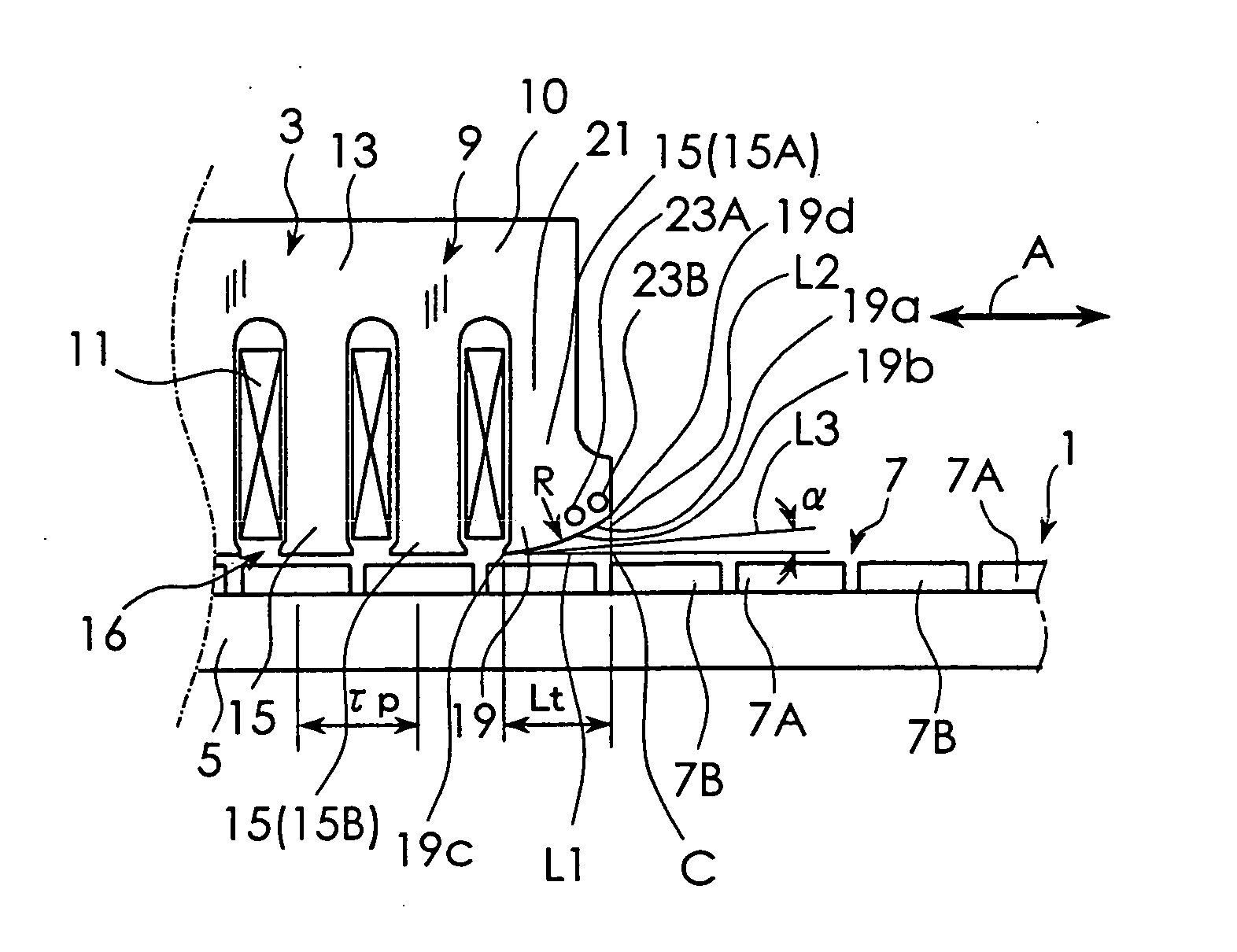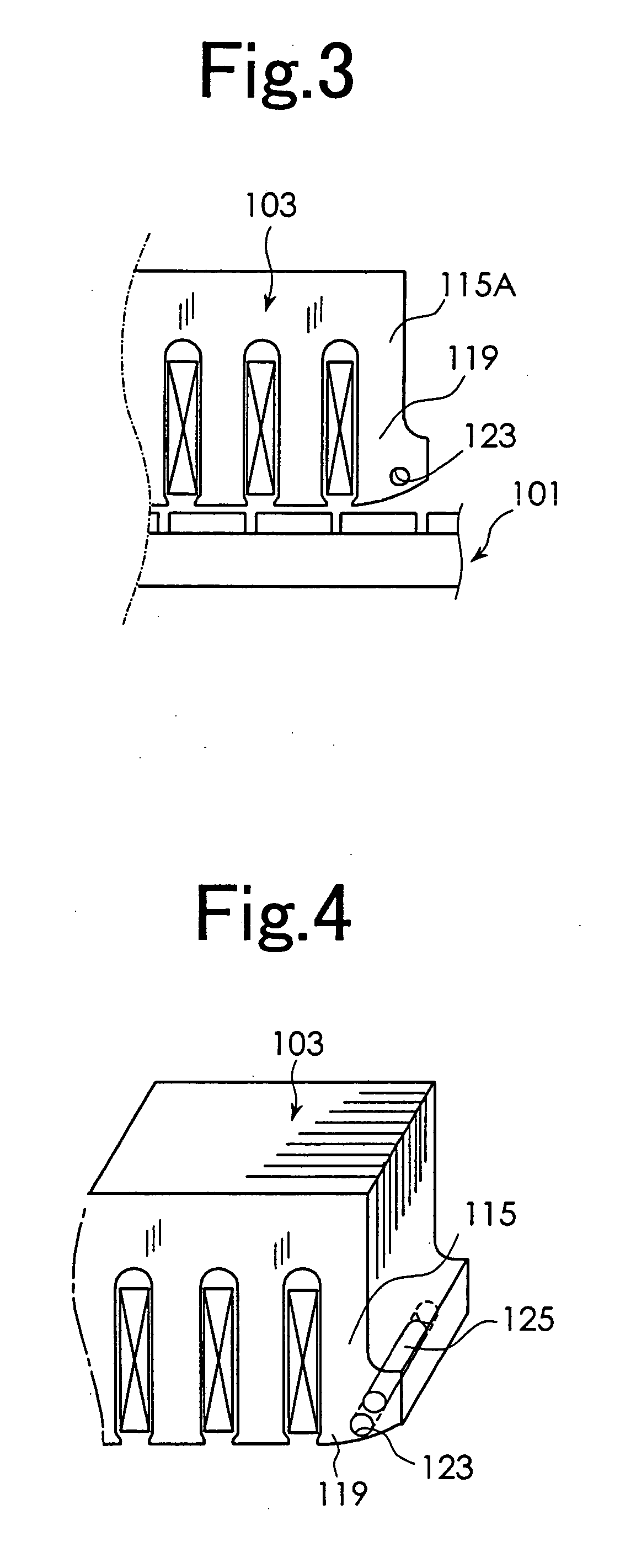Linear motor with reduced cogging force
- Summary
- Abstract
- Description
- Claims
- Application Information
AI Technical Summary
Benefits of technology
Problems solved by technology
Method used
Image
Examples
Embodiment Construction
[0020] The best mode for carrying out the present invention will be described with reference to the appended drawings. FIG. 1 is a schematic diagram used to explain the construction of a linear motor according to a first embodiment of the present invention. FIG. 1 shows part of a stator 1 and part of a movable element 3. As shown in FIG. 1, the linear motor according to this embodiment includes the stator 1 and the movable element 3. The stator 1 has a structure provided with a magnetic pole row 7 on a base 5. The magnetic pole row 7 is constituted by alternately arranging a plurality of N-pole permanent magnets 7A and a plurality of S-pole permanent magnets 7B.
[0021] The movable element 3 is movably supported by supporting means not shown, relative to the stator 1. The movable element 3 includes an armature constituted by a core 9 and multi-phase exciting windings 11 as shown in a perspective view of FIG. 2. The core 9 is constituted by laminating a plurality of electromagnetic st...
PUM
 Login to View More
Login to View More Abstract
Description
Claims
Application Information
 Login to View More
Login to View More - R&D
- Intellectual Property
- Life Sciences
- Materials
- Tech Scout
- Unparalleled Data Quality
- Higher Quality Content
- 60% Fewer Hallucinations
Browse by: Latest US Patents, China's latest patents, Technical Efficacy Thesaurus, Application Domain, Technology Topic, Popular Technical Reports.
© 2025 PatSnap. All rights reserved.Legal|Privacy policy|Modern Slavery Act Transparency Statement|Sitemap|About US| Contact US: help@patsnap.com



